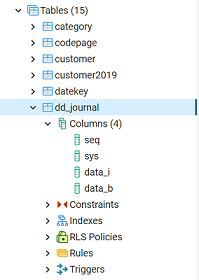Log-based and trigger-based capture modes
The log-based mode and the trigger-based mode are two different modes of capture.
| Capture mode | Description |
|---|---|
| Log-based |
The journal (.JRN file) is created at the installation step (during the journalization process), in the selected directory. The capture engine stores the transactions in the .JRN file and those transactions are then read by the source engine. Information noteNote: With an AS/400 IBMi source database, there is no
.JRN file. The capture engine
directly reads the database.
|
| Trigger-based | A dd_journal table of transaction logs is created in each source database.
The capture engine reads transactions from this intermediate table. They are then stored in the .JRN file and deleted from the intermediate table. Eventually, the source engine reads those transactions. Information noteNote: The source database may be triggered by other programs
than Talend Change Data Capture (for example, an ERP), and only one trigger can be
performed on a table. These limitations can raise
performance issues and have an impact on the user
profiles.
In case of structural changes of the database (e.g. a column addition), it is possible to rebuild the trigger manually, so that the database trigger functions can take these changes into account. To do so:
from Journal Management window,
right-click the table to access rebuild the
trigger. |
Support according to the source database
Some source databases support only one of the two modes:
- log-based mode only: AS/400 IBMi and Oracle between v10 and v19c (through the LogMiner),
- trigger-based mode only: PostgreSQL≥9.2, MySQL, MariaDB and Oracle between v8 and v10.
For all other source databases, both modes are supported.
Did this page help you?
If you find any issues with this page or its content – a typo, a missing step, or a technical error – let us know how we can improve!


